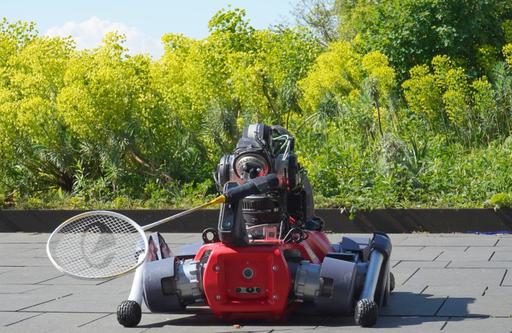Researchers have successfully taught a quadruped robot to play badminton using machine learning technologies. The robot dog can self-learn but currently plays at an amateur level.

G. Ostrov
A team of scientists has achieved a significant breakthrough in robotics by successfully teaching a quadruped robot to play badminton. This project demonstrates the impressive capabilities of modern machine learning and adaptive algorithms in robotics.
Technical Features of the Project
The robot dog is equipped with a sophisticated system of sensors and cameras that allow it to track the shuttlecock's trajectory in real time. The robot's artificial intelligence analyzes the shuttlecock's flight and calculates the optimal position for hitting. The machine learning system enables the robot to continuously improve its playing skills.
Learning Process
The robot's training occurred in several stages. Initially, researchers programmed basic movements and reactions to various game situations. Then the robot began independently analyzing its mistakes and correcting its playing technique. Deep learning algorithms allow the robot to adapt to different playing styles of opponents.
Current Playing Level
Currently, the robot dog demonstrates playing skills at a beginner amateur level. It can successfully return simple serves and execute basic shots, but still struggles with more complex technical elements and fast rallies. Hit accuracy is around 60-70%.
Advantages of the Robot Player
The robot has several unique advantages:
- Tirelessness - can play without breaks
- Movement stability without emotional influence
- Continuous self-learning capability
- Ability to analyze large volumes of game data
- Adaptation to various playing conditions
Challenges and Limitations
Despite successes, the project faces several technical challenges. Main difficulties are related to precise calculation of the fast-moving shuttlecock's trajectory, coordination of four legs and racket movements, and adaptation to unpredictable actions of human opponents.
Future Prospects
Researchers plan to continue improving algorithms and raise the robot's playing level to professional standards. They are also considering applying the developed technologies to other sports and everyday tasks requiring precise movement coordination.
This project opens new horizons for sports robotics development and demonstrates artificial intelligence potential in mastering complex physical skills.
If you encounter any problems, contact us - we'll help quickly and efficiently!




